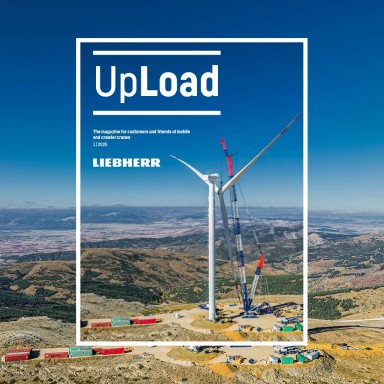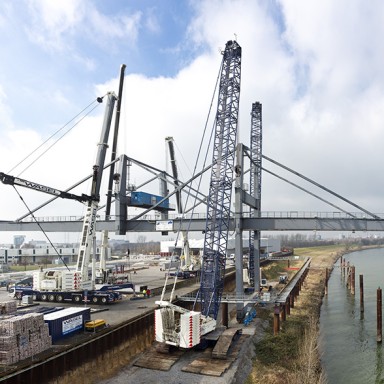
4 minutes - magazine 01 | 2025
The Construction Site Booster
Last year, a huge cold storage facility was built south of the Portuguese capital Lisbon.
“Time saved 600 times” – LTR 1100 accelerates major project near Lisbon
new telescopic crawler crane owned by our customer Transgrua carried out the precast concrete construction of the 33,000-square-metre building. The LTR 1100, with its ability to move under load and reposition itself quickly, increased the speed of the construction site processes.
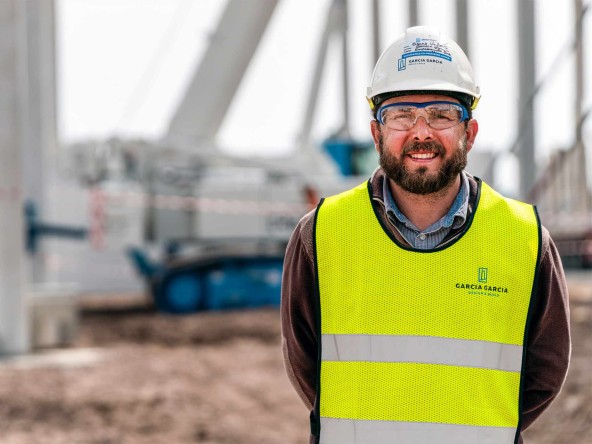
Senior foreman Bruno Valente from Garcia Garcia and crane operator João Neves are in agreement: “An ideal piece of equipment!”
For Bruno Valente, senior foreman at construction company Garcia Garcia, which specialises in the construction of large logistics, industrial and residential buildings, the case is clear: “I assume that the crane will have to change its working position up to 600 times during the assembly of this large building and move between concrete pillars, walls and stored components. This LTR 1100 can do this on its crawler track in no time at all. A conventional mobile crane needs around 20 minutes to do this. Telescope the boom in and retract the supports, then move and support again. It all just takes time,” says the experienced site manager. “And if you add up all these 20 minutes, you end up with quite a lot of time by the end of the construction project. That shortens our construction time here considerably!”
The pace on the construction site near Montijo, south of the River Tagus, and the rapid construction progress are indeed impressive. When a heavy transporter laden with components arrives, the assembly team and João Neves, the crane operator of the LTR 1100, are already waiting. The crane is then usually already in position, wall elements are attached, pulled over the height of the building and then eased from above into the guides of the upright pillars. If a concrete component cannot be installed immediately, it is simply moved on the hook of the LTR 1100 to where it is needed later. “The prefabricated parts that I install all weigh between 14 and 18 tonnes,” says João. “The crane is perfect for work like this,” he enthuses. “If the radius is a little too large, I can simply drive a few metres closer to the load or the assembly site. Hanging loads can be moved really quickly.”
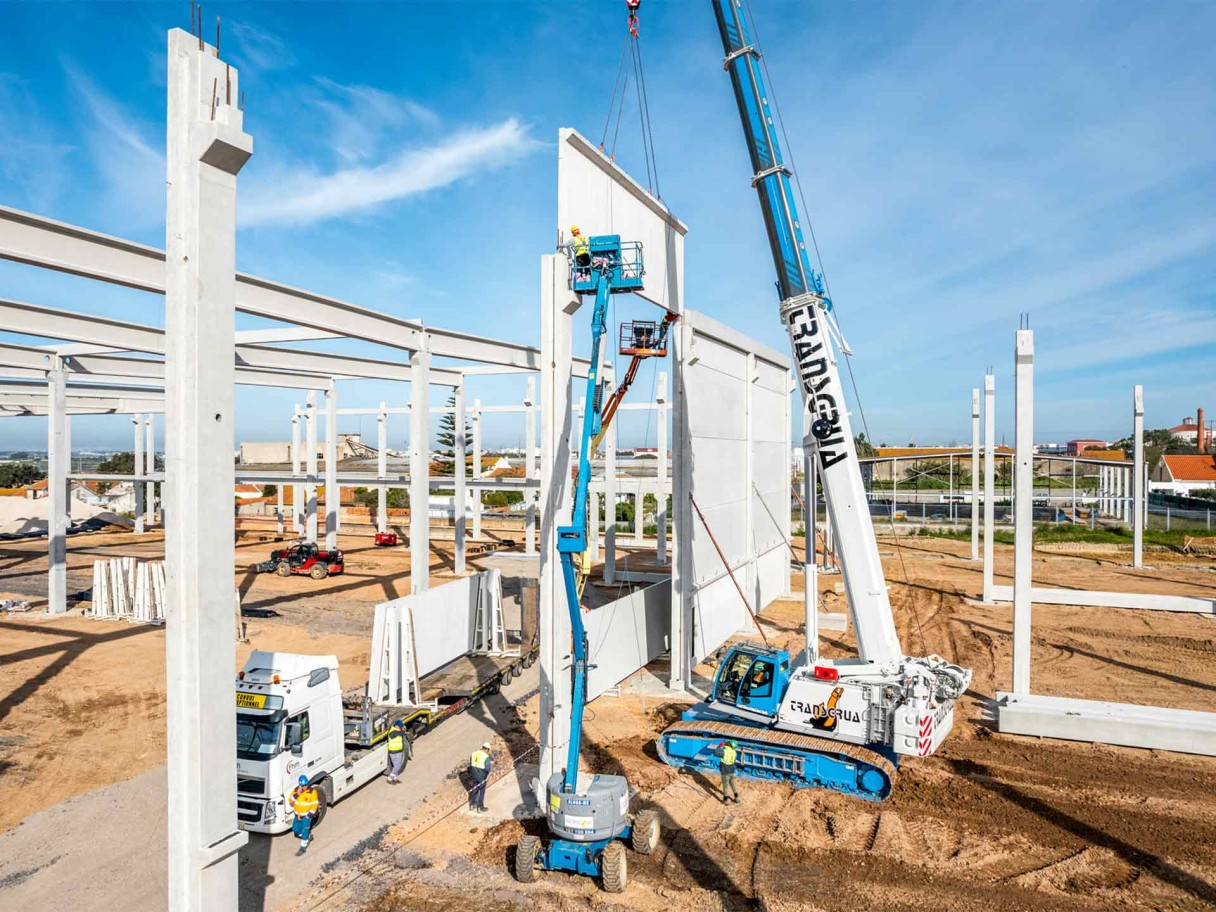
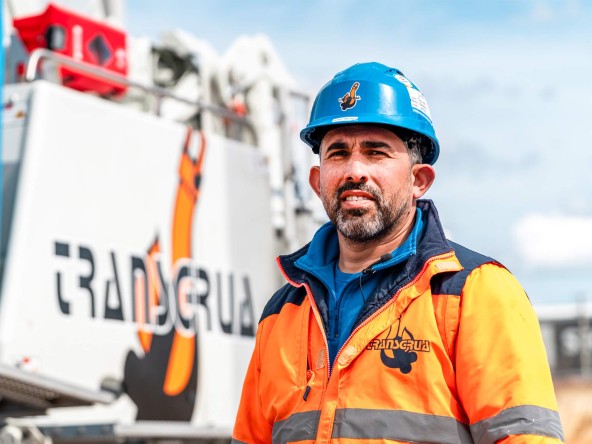
Crane operator João Neves
“A win”
“We are around 20 to 30 per cent faster here with the crawler crane than with a conventional mobile crane,” estimates Bruno Valente with satisfaction. Travelling with a suspended load and the entire operating principle of the crane makes our work on this construction site much easier. It’s the first time I’ve worked with this type of crane. A real win.”
The LTR 1100 was also completely new territory for João, our driver, until this assignment. Five days of familiarisation – then he was sitting on his new white and blue crane, complete with stylish company logo made from an orange-coloured hookblock. “This is Transgrua’s first telescopic boom crawler crane and it is absolutely the right machine for this construction site. Even in mud after days of rain, the crane is easy to drive,” he explains. “A conventional mobile crane could easily get stuck in the mud here. Crawler carriers are just the ideal and reliable means of transport for this terrain. Together with its stability, it also makes working safe. Really safe.”
The machine’s favourable features have also convinced Transgrua, as we have already delivered another telescopic boom crawler crane to the Portuguese firm. This LTR 1060 complements the impressive fleet of 120 cranes and loading cranes managed by Transgrua, who also operates in Angola. And later this year, one of our brand new LTR 1150s will become the third telescopic crawler crane to be painted with the Transgrua logo.
This article was published in the UpLoad magazine 01 | 2025.

